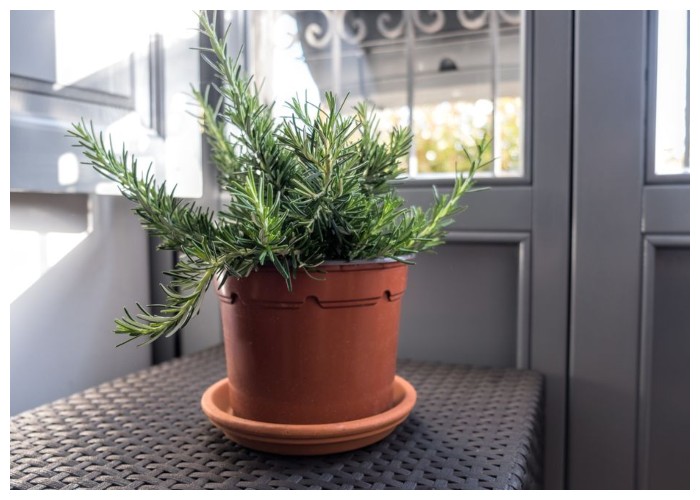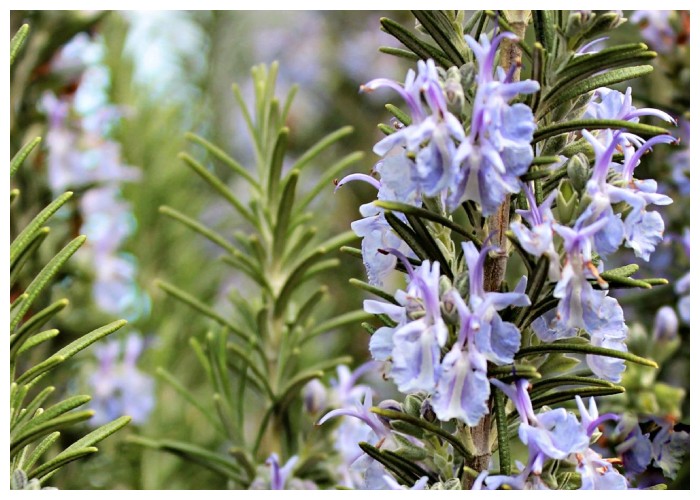The quest for a thriving garden is a journey of passion, patience, and persistence, especially when it involves the ever-popular rosemary. Known for its aromatic fragrance and culinary versatility, rosemary holds a prestigious place in gardens worldwide. However, its care can sometimes puzzle even the most enthusiastic gardeners. To demystify the art of rosemary cultivation, we turned to Weslie Etienne Pierre, celebrated author of The Modern Plant Parent and proprietor of Wesleaf, for his sage advice.

The Versatile Virtues of Rosemary
Rosemary’s adaptability is one of its most appealing traits, flourishing in various environments, from the seclusion of indoor pots to the expansiveness of outdoor gardens. “Rosemary’s versatility is its strength,” Pierre explains, highlighting its preference for terracotta pots that promote better oxygen flow and its ability to thrive both indoors and outdoors. Its love for bright, sun-drenched spots is paramount, requiring placement away from the shade of trees or in south-facing windows that bask in unobstructed sunlight.
A common pitfall in rosemary care is over-watering. Pierre emphasizes the importance of moderation, advising watering only every other week or when the soil has thoroughly dried out, ensuring the plant’s roots are not left in moisture-laden conditions.
The Step-by-Step Journey to Rosemary Success
Rosemary: A Perennial Pleasure
With its distinctive, piney scent and visually striking dark green leaves accented with silvery undertones, rosemary is an essential addition to any garden. A member of the mint family, this perennial evergreen offers both upright and creeping varieties, adorned with small, captivating flowers from late spring to early summer. Native to the Mediterranean, rosemary boasts remarkable drought resistance once established, thriving in warmer zones as a robust shrub.
Optimal Growth Conditions
While patience may be needed when growing rosemary from seed due to its slow germination, starting with a small plant can lead to rapid growth under ideal conditions. Rosemary’s love for sunlight is non-negotiable, requiring at least six hours of direct exposure daily to prevent weak growth. Although it can withstand heat, humid conditions may lead to powdery mildew, which, while not fatal, should prompt avoidance of affected branches in culinary uses. Good air circulation is key to disease prevention.

Soil, Water, and Nutrient Guidelines
Pierre notes that rosemary thrives in sandy, well-drained soil, reminiscent of its Mediterranean origins. For those contending with heavy clay, container planting is recommended, with unglazed terra cotta pots being the ideal choice for their moisture-evaporating qualities. Watering practices should err on the side of under-watering rather than over-watering, allowing the soil to dry slightly between watering sessions. Nutritionally, rosemary is low-maintenance, benefiting from compost in warm climates but otherwise growing vigorously without additional fertilization.
Indoor Cultivation Tips
For those limited by outdoor space, rosemary’s indoor cultivation is not only possible but encouraged. The key to success lies in ensuring adequate light exposure, ideally through bright east, west, or south-facing windows, or by supplementing with grow lights in less illuminated environments. Insufficient light is the primary challenge, leading to weakened plant growth and leaf loss.
Embarking on Your Rosemary Growing Adventure
Rosemary’s journey from a humble seedling (or a carefully chosen young plant) to a full-fledged, aromatic shrub is a testament to the gardener’s dedication and care. By adhering to the expert advice of Weslie Etienne Pierre, gardeners can navigate the nuances of rosemary cultivation, ensuring their gardens are graced with this aromatic, perennial favorite. From the right soil and sunlight to precise watering and care, your path to mastering rosemary care is now illuminated, promising a garden enriched with fragrance, flavor, and the verdant beauty of this esteemed herb.